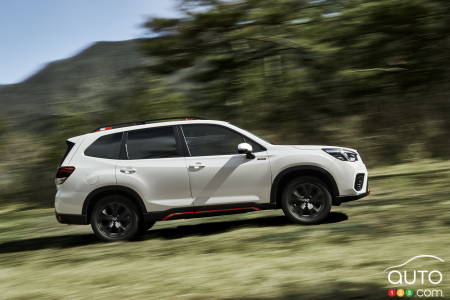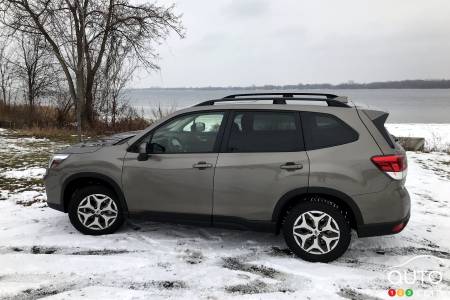Over the next few weeks, we’re going to share with you our impressions of the virtues – and likely a few vices - of the 2021 Subaru Forester as part of our long-term review of the SUV. Today, some back-story...
See also: 2021 Subaru Forester Long-Term Review, Part 2: Of Buttons and Murmurs
See also: 2021 Subaru Forester Long-Term Review, Part 3: Cramming It All In
See also: 2021 Subaru Forester Long-Term Review, Part 4: The Road Trip Test
See also: 2021 Subaru Forester Long-Term Review, Part 5: All 4-Wheel Drive, All the Time
See also: 2021 Subaru Forester Long-Term Review, Part 6: Tech That Wants Your Happiness
See also: 2021 Subaru Forester Long-Term Review, Part 7: Conclusion
First things first: The bronze-coloured 2021 Forester I was given to test-drive for the next several weeks came with the Touring package and retails for $36,195 before taxes, but including $1,800 in transport and prep fees.
Second things second : Before getting in and driving the vehicle, I’m taking a few minutes of your time to define Subaru’s place on the global automotive chess board, and Forester’s role in the automaker’s lineup.
Once upon a time…
During the Second World War, the Makajima group was busy manufacturing fighter planes, in addition to some other lucrative machinery. In 1945, the company took a new identity, Fuji Sangyo, and made a bunch of new stuff, namely scooters and buses, until the occupying Allied administration compelled it to break itself up into 12 distinct corporate entities. In 1953, five of those splintered groups managed to rejoin together, and thus was born Fuji Heavy Industries.
FHI, as it was known to intimates, officially threw itself into making cars the next year. That automotive division would take the name Subaru, which in Japanese has two meanings: the action of uniting, and the name given to the Pleiades, a grouping of stars that are part of the Taurus constellation.
Discover Shopicar! All new makes and models and all current promotions.
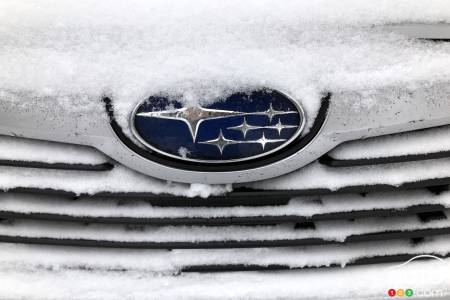
In fact, take a closer look at the logo on my slightly frozen Subaru. You’ll see five starts, which represent the five companies that originally made up Fuji Heavy Industries, which itself makes an appearance as the sixth, largest star on the logo,
The 1954 Subaru 1500 was FHI’s first attempt at a four-wheeled motorized vehicle, but it was a very meek one. Even though it was made with a monobody chassis, an extreme rarity at the time and an element born of the company’s expertise in aeronautics, the 1500 was only produced in a tiny quantity - 20 units.
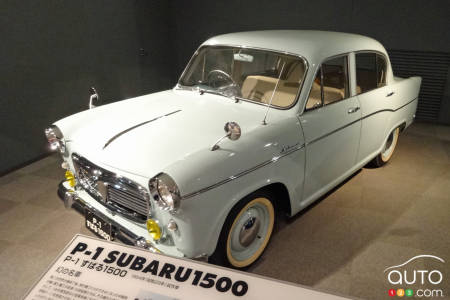
The 360 – 390,00 units of which were produced between 1958 and 1971 – is thus considered to be the first true Subaru model. The tiny automobile (it was a “Kei car”) was to budget-conscious Japanese consumers what the VW Beetle was to their German counterparts: the car of the people. And like the VW, it earned itself an insect-based nickname: the Ladybug.
At some point, the little 360 drew the attention of one Malcolm Bricklin. The American entrepreneur had gotten famous as much for his failures as for his successes. 1975’s Bricklin SV-1 (for Safety Vehicle) could go head to head with a Corvette, and was actually produced, some might remember, in Nova Scotia, though the whole project aborted before it got very far.
Why am I telling you this? Because our man Bricklin, a businessman always ready to jump into a new venture, founded Subaru of America in 1968, and set about selling 360s on our continent. He marketed them as “Cheap & Ugly”.
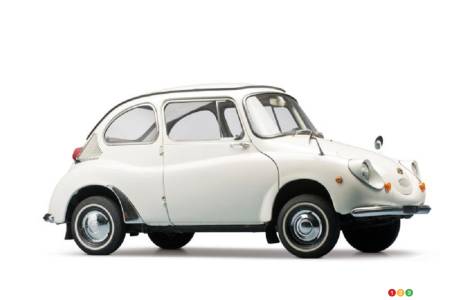
More influential than the 360 in assuring a future for the Japanese automaker was the 1966 1000 (known in the USA as the FF-1 Star). Not only was it a front-wheel drive car, a first for FHI, it also ran on a boxer engine, in which the cylinders are laid horizontally. It was a feature that would become a trademark of the brand. More on that later.
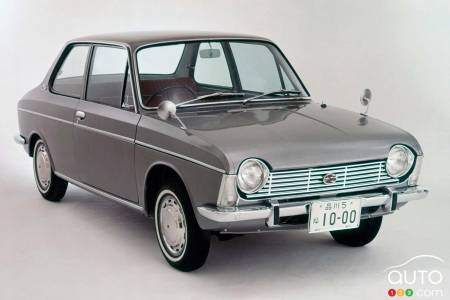
And why not 4x4?
Another crucial event in the history of Subaru was the 1975 introduction to North America of the four-wheel-drive wagon version of the Leone (also known by the letters attached to the variant, in the style of the Subaru GL).
With the 4x4 wagon, the automaker had hit on a winning formula. In 1978 the platform was used to underpin the new and instantly unforgettable Brat, explicitly inspired by the Chevrolet El Camino. Subaru didn’t have another go at the format until 2013 with the Baja, another pickup-wagon mashup, the lifespan of which (in years) ultimately equaled the number of doors it had (4).
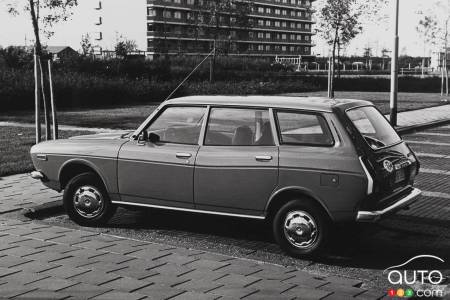

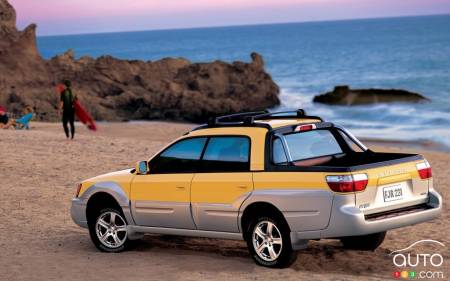
If there’s one thing you can’t accuse Subaru’s designers and engineers of, it’s shying away from their eccentric side. Take a look, for example, at the 1986 XT Coupe, or the Lilliputian 1987 Justy, with its 66-hp 3-cylinder engine, optional 4x4 system and CVT transmission, the first of its kind in the world!
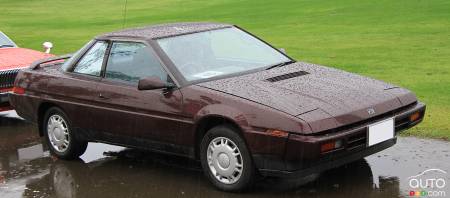
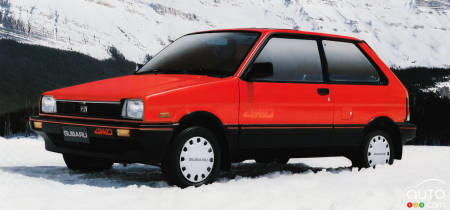
Then came 1990 and the Legacy, which replaced the Leone to provide better competition to the Accord and Camry. Subaru did hedge its bets, continuing to sell DL/GL models and calling them Loyale…
To promote its newly arrived Legacy around the world, Subaru signed it up in the World Rallye Championship; in retrospect, an absolutely genius move!
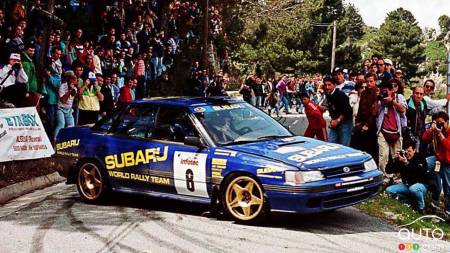
I have only fond memories of the 1992 SVX, Subaru’s second attempt at the performance sector after a failed first try with the baroque XT. Drawn up by Giugaro, and equipped with a 230-hp flat-6 engine as well as AWD, it was fast, comfy and attractive – which, still at that time, did not exactly fit with the popular image of a Subaru.
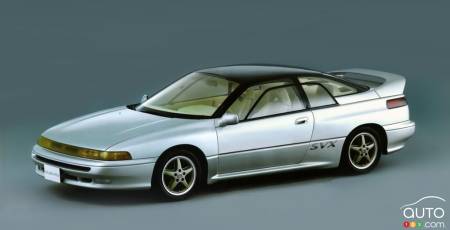
In 1993 the Impreza made its appearance, in coupe, sedan and hatchback format. This popular compact version also eventually led to the birth od the WRX and STi variants, which bossed rally circuits and became new poster favourites for teens (and overgrown teens) alongside the Mitsubishi Lancer Evolution.
Starting the next year, in 1994, the Legacy wagon received different options packages, notably the Outdoor kit that gave the car AWD, an “armour” protection and adjustable-height suspension. This very good idea led the very next year to the Outback, a wagon for outdoors enthusiasts. Some may recall the ubiquitous TV ad campaign that saw none other than Crocodile Dundee actor Paul Hogan singing the Outback’s praises in his inimitable Aussie accent.
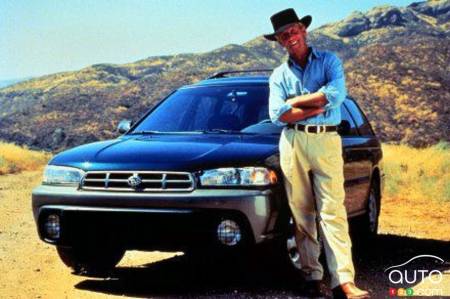
Start of a trend
Subaru smacked its next big home run three seasons later, in the form of, yes, our Forester! Starting from the Impreza, the brand’s engineers designed a type of cube-shaped vehicle and gave it the Outback’s 2.5L engine. It was still identifiably a wagon, but it sat high and had more horses at its disposal. And voilà – a sport utility vehicle. An SUV. That term would of course start to spread, slowly and then very, very quickly, throughout the automotive industry.

In 2005 Subaru produced its biggest vehicle to date, the B9 Tribeca. It contained three rows of seats, and it was the brainchild of General Motors, which at the time controlled 20 percent of Subaru. It was also a resolute flop. Subaru has much higher hopes for its spiritual successor, the Ascent.
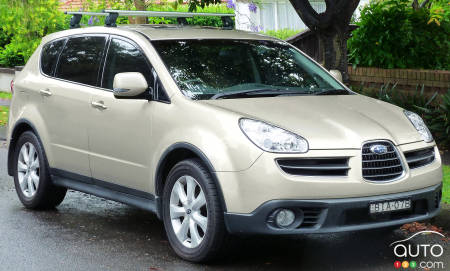
By 2013, it was Toyota that owned 20 percent of Subaru shares, and the two companies came together to produce that year the Subaru BRZ/Toyota 86/Scion FR-S model(s). The BRZ was the brand’s first model since the 360 to feature rear-wheel drive, and its only non-4x4 model available in Canada.

That same year, we were introduced to the XV Crosstrek (which quickly became simply Crosstrek); essentially, this was an Impreza on steroids. Subaru clearly had come to the conclusion that what had been good for the gander (the Legacy-cum-Outback) was good the goose. And it was a very savvy conclusion: the Impreza-cum-Crosstrak has become the brand’s best-selling model in Quebec, which loves its Subarus, outpacing the Impreza, Outback and Forester (second, third and fourth, respectively).
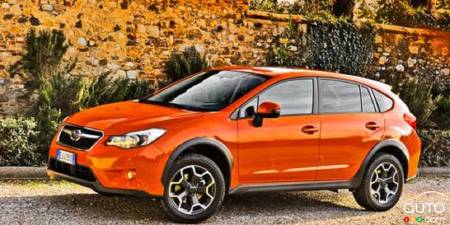
In 2017, Fuji Heavy Industrie became the Subaru Corporation, comprised of four main divisions: automotive, aerospace, industrial and eco-technological (as in, wind turbines and such).
And that brings us to now! I promise that by my next dispatch, I will have actually started up and driven my 2021 Forester.
Specifications sheet of 2021 Subaru Forester
